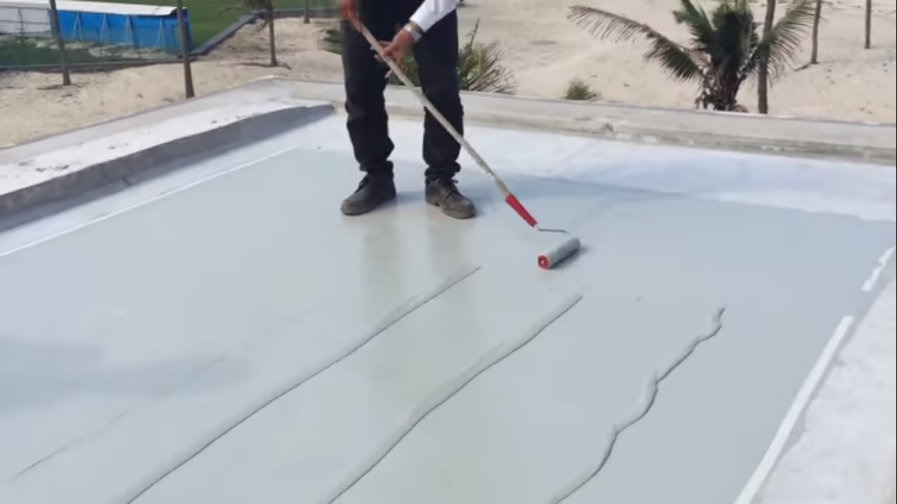Liquid-Applied Membrane
The advantage of liquid-applied membrane is high strength and elasticity properties.
The advantage of liquid-applied membrane is high strength and elasticity properties.

Figure 1: Liquid-Applied Membrane
Liquid-applied membrane can be easily applied by using a brush, spray, roller, trowel, or squeegee, and the solvent base typically contains urethane or polymeric asphalt (hot or cold-applied). The liquid-applied membrane is generally applicable to various types of structures and substrates, which can be applied at the rooftop, road, basement, and terrace. It is good in filling up cracks, gaps and voids to provide seamless protection.
The advantage of liquid-applied membrane is high strength and elasticity properties. It also has low in-place costs and can be easily applied at various surfaces. Its typical lifespan is around 25 years, which is relatively high compared to the other waterproofing methods. However, high-quality workmanship is required to assure the applied membrane’s thickness and uniformity. The possibility of air bubbles may occur as a result of improper substrate preparation. In addition, it has toxic and hazardous VOCs, so the workers’ healthcare needs to be concerned.
The liquid-applied membrane can effectively good to solve water leakage issues. It is particularly suitable at places with uneven surfaces or many complicated details. Its properties with high strength and elasticity as an advantages, however the obvious disadvantage is inconsistency in coverage. To ensure they can reach the minimum coverage, the applicator must take additional care when applying it.
You cannot copy content of this page
